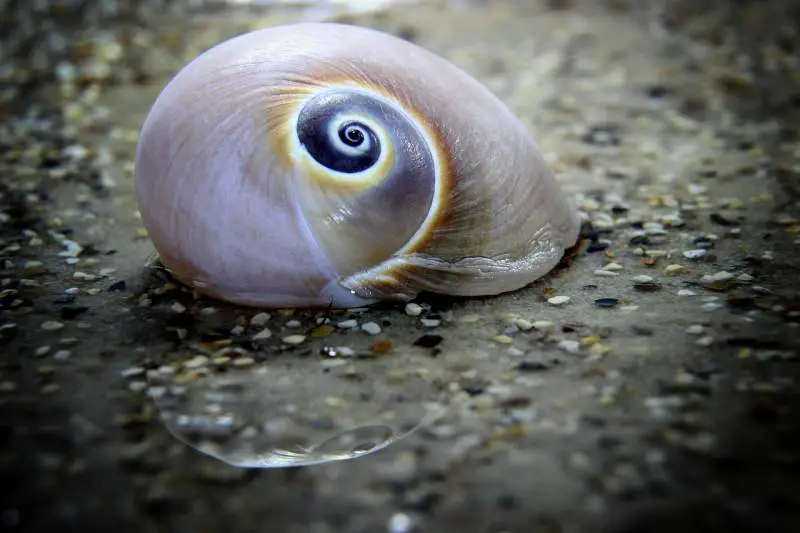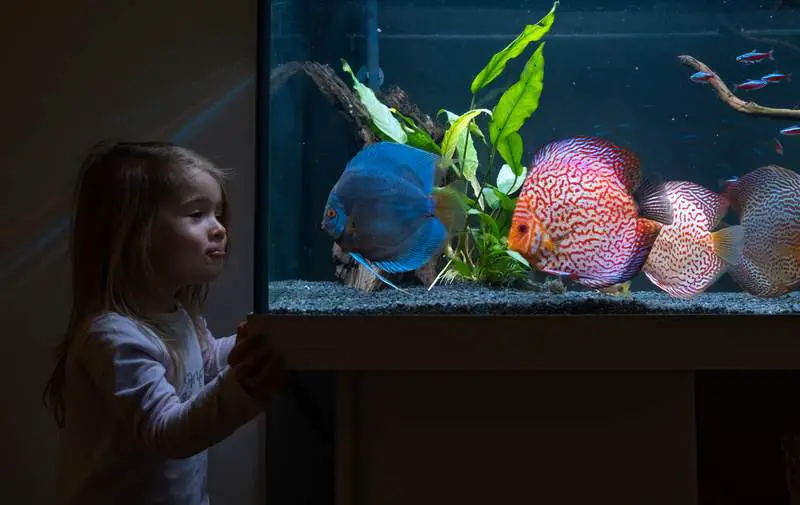With an aquaponics venture, a symbiotic agreement exists between the crops being grown and the fish in a connected tank, each washing the hand of the other, so to speak.
This closed system is extremely efficient, is beneficial for both organisms, and pays dividends for the farmer in the form of better crops and healthier fish. Into this harmonious environment, would it be wise or advisable to add a third living component in the form of snails?
Easily overlooked and flying under the radar, the humble snail is not immediately considered as a potentially important addition that would have anything to add to an already efficient aquaponics bio-sphere. But that couldn’t be further from the truth, the benefits being surprisingly numerous.
Aquaponics With Snails
The work that snails undertake in aquaponics can be compared to the work done by worms in soil. Earthworms by their nature increase nutrient availability, boost drainage efficiency, and improves the structural stability of the soil, and that in turn enhances the productivity of the farm, making a happy farmer.
Snails are the worms in aquaponics and can be just as beneficial, if not more so. They act as an early warning system to emerging problems as well as having a natural instinct to keep a clean house.
That’s not to say that fish are messy aquarium mates, but sometimes uneaten excess food can find its way to the bottom of the tank, stay there and start to rot. That decaying food matter can adversely affect the well-balanced ecosystem if not continually removed on a regular maintenance routine.
Snails are similar to auto cleaners and whatever excess food falls to the bottom of the tank is disposed of in short order.
And talking of eating. If the fish are not being fed sufficiently, they will, like any other creature, search for another source of food. That search will quickly lead to the snails and will put them squarely in the center of the new menu.
It may seem a bit harsh but in the role of natural selection, and the hierarchy of the aquaponics farm, the fish are ranked as more important in the system than the snails. Once the feeding level for the fish is back to normal, they will, fortunately, return to their normal diet and cease snacking on the snails.
Conversely, this situation can work the other way, but not in a survival of the fittest way.
This generally occurs if a dead fish goes unnoticed by the farmer, which is easily done in a vibrant underwater environment and, just like decaying food, the body will start to rot on the floor of the tank, which in turn will raise the ammonia to a toxic level.
Being prolific eaters with insatiable appetites, snails will gravitate towards any dead fish and the remains will be gone in a matter of days, restoring the delicate balance.
How Are Snails Important In Aquaponics?
With a bustling farming endeavor, it can be a relatively easy matter to either overfeed or underfeed the fish in aquaponics, to treat them just like a component in the closed-circuit system rather than a living, breathing organism, and not prioritize their nutritional needs.
In both events, the snails can be an early indicator of what is happening in the fish tank in regards to the well-being of the aquatic livestock. Due to their presence overfeeding can be quickly recognized as, when there is an overabundance of food, the snails eat more and tend to breed more, multiplying rapidly in just a few weeks.
So, it is a clear indication when there is a sudden snail population explosion that too much food is being allocated to the fish, who, unlike the snails who hoover up any excess with wanton abandon, only eat until they are satiated.
The reverse can be noticed if the fish start to snack on their slow-moving tank mates. If one morning all the snails are gone, leaving behind only empty shells, then the fish are definitely not being fed sufficiently. Once noticed, and before it gets to the complete decimation stage, adjustments can be made accordingly.
Not only are snails a good barometer of proper feeding levels, but they can also be a reliable indicator of the quality of the water. If, for example, there is a very low level of oxygen available to adequately sustain life or if there is some other problem, the snails will decide it’s time to find a better environment and head towards the exit, and the edge of the tank.
It is not necessary to be a snail whisperer to interpret what they are trying to communicate from their clustered position at the lip of the aquarium – they want out. Their positioning can indicate a whole range of problems, but more importantly, it is an early warning klaxon that something is going wrong.
Once noticed, the exact problem needs to be identified and a quick solution found before the situation worsens and jeopardizes the entire aquaponics farm, risking the loss of fish life and the loss of a valuable harvest.
Types of Snails for Aquaponics
It is important, however, to choose the right snails from the outset, as not all snails are suitably efficient for aquaponics.
Two that fit the bill are the Malaysian trumpet snails and Ramshorn snails. Out of the two, the Ramshorn snail is the preferred option for aquaponics, acting as an early warning system, keeping the fish tank free from decaying matter, and in the eventuality that the fish are underfed, they can be a readily available food source.
Their ability to breed faster than the Malaysian trumpet snail is one of the things that sets them apart. The lifespan of a snail is generally about one year, although in some cases that can extend to between 2 to 3 years, so it is beneficial if they can reproduce quickly to keep the population at a good level.
Adding snails into an aquarium enhances the underwater environment by simple diversification. Apart from the aforementioned benefits they bring to the aquarium, incorporating another species such as snails adds another dimension of enjoyment and splashes of slow-moving intricate colors and unusual shapes.
They tend to be compatible co-inhabitants to most species of fish and, even though some species can over-reproduce rapidly if left to their own devices unmonitored, they can make interesting pets in and of themselves.
In-depth research is required before introducing even one snail into the tank to prepare yourself for their needs and in expectation of the changes they are going to bring, which can be both positive and negative if overlooked.
On occasion, an over-abundance of snails can enter the aquarium by hitching rides on plants, in gravel or even on decorations as minute transparent eggs. And before you know what’s happening, there are dozens of snails that have not been accounted for, negatively affecting the finely tuned system and creating an imbalance.
To combat this over-population and strain on the filtration system, some of the snails would have to be removed. Yet even this can be a challenge in itself as they are very adept at hide-and-seek. An interesting method of tracking them down and eliminating them is to send in a snail to catch a snail.
This solution calls for a type of snail that eats other snails. Once in the aquarium, these Assassin snails being carnivores will set to work straight away to reduce the over-population and re-balance the equilibrium that was initially strived for.
An Aquaponic Snail’s Pace
Choosing the correct and right quantity of snails for your aquaponics farm can expand the efficiency of the farm. They can alleviate the need for constant surveillance and be an early warning system for the little, unseen problems that can easily be overlooked, and become major problems.
Incorporate them, treat them as well as you do the fish, as a valuable member of the aquarium. You will be amazed at how the humble snail can make your life easier, and how it will slow the hectic pace that comes with a high- maintenance aquaponics project right down to a snail’s pace.





